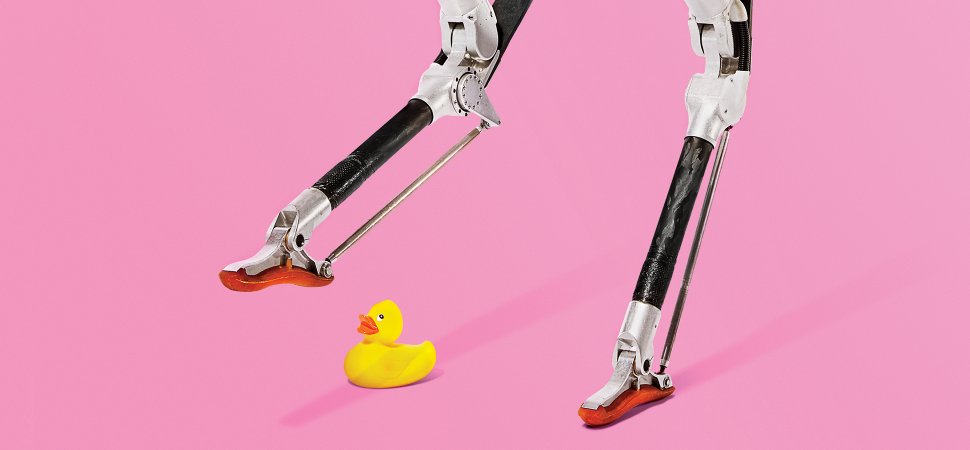Agility Robotics, which was spun out of Oregon State University in early 2017, is building robots that can traverse any terrain–from rocky hillside to sidewalks. Its first product, Cassie, has found work at half a dozen research institutions. The Albany, Oregon-based company, which will close its Series A in early 2018, envisions the bot eventually being used for everything from deliveries to facility inspections to hazardous search-and-rescue operations.
The brains behind the operation.
Cassie has two internal computers. One operates a control loop that is responsible for the lower-order functions that keep Cassie operating safely–just as the cerebellum in humans and other animals controls posture and balance. The other, which responds to commands from its human controllers, is a sort of traffic cop, handling all active movement. This might seem complex, but the robot is designed to be user friendly: “You can walk it around your lab the day you buy it,” Hurst says. And you don’t have to take it to lunch.

Under the hood.
Cassie’s motor must be on for it to stand upright; cut the power and it collapses in a heap. “That’s actually an advantage,” says Agility Robotics co-founder and CEO Damion Shelton. “It means there’s no built-in mechanical stability to the system, which makes its ability to react to disturbances and unexpected ground positioning really high.”
How to balance a bot.
Objects that are top heavy are actually easier to balance, so Cassie is designed with more than 85 percent of its weight above the top joint. The bot’s lightweight legs provide a second benefit: Very little energy is required to move them, making the machine quicker to react and more efficient overall.
The beauty of ostrich legs.
Cassie’s avian aesthetic isn’t exactly by design. As part of his research at OSU, Agility co-founder and CTO Jonathan Hurst and his team closely studied the ways various animals perambulated, and then created a robot that replicated those mechanics. The resulting system, called Atrias, achieved the same basic output of a strolling animal–though it looked and moved nothing like one. To create Cassie, the Agility team used Atrias as a sort of first step, and then performed analyses to improve efficiency. “It turns out,” says Shelton, “if you start with a mechanism that represents the motion of animals but not the design of animals, and then you do a bunch of math to remove all the extra bits that you don’t need from the design, what you get back is something that looks a lot like an ostrich.”
Cats and dogs and dinosaurs.
Like dogs, cats, rodents, and most birds, Cassie has a digitigrade walking style, meaning it walks on its toes. (Dinosaurs did this too. You, by contrast, plant your heel first when walking.) What look like inverted knees are actually the anatomical equivalent of Cassie’s ankles; the long rods below these joints are the feet, and the parts that touch the ground are the digits.
Yearning to go free.
The company’s goal is for the bots to operate autonomously–say, in a dangerous industrial environment. For now, Cassie can be run from a laptop–although that’s actually technological overkill. “We found out,” Shelton says, “that you can’t engineer a solution that’s better than what people use for remote-control airplanes, so we just bought a bunch of those remotes.”
Cassie’s next task: job hunting.
Agility’s current customers are research institutions, including the University of Michigan. The company is selling the bots with extensive warranties. “That’s to encourage people to push limits of what’s possible with the robot,” Shelton says. “We didn’t want them to feel like they have to baby it, because the goal is to have people figuring out what works well and what doesn’t work before we sell to corporate customers.” Agility’s plans include giving Cassie arms so it can do things like deliver packages, carry tools, help around the house–and pick itself up when it falls down.












